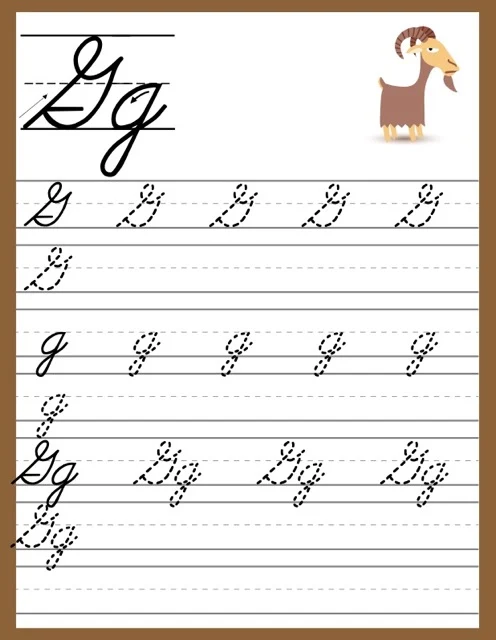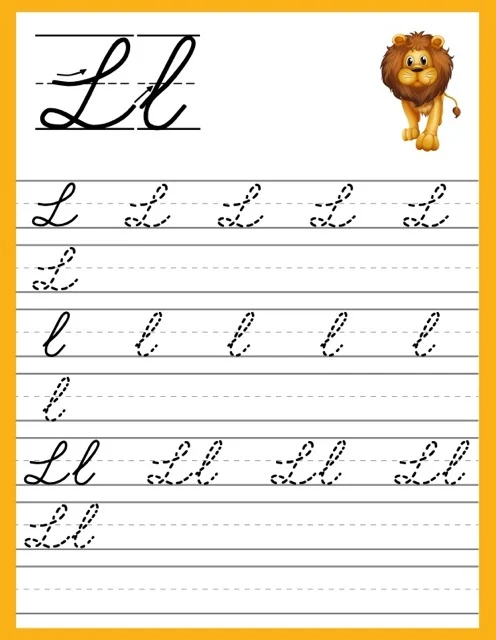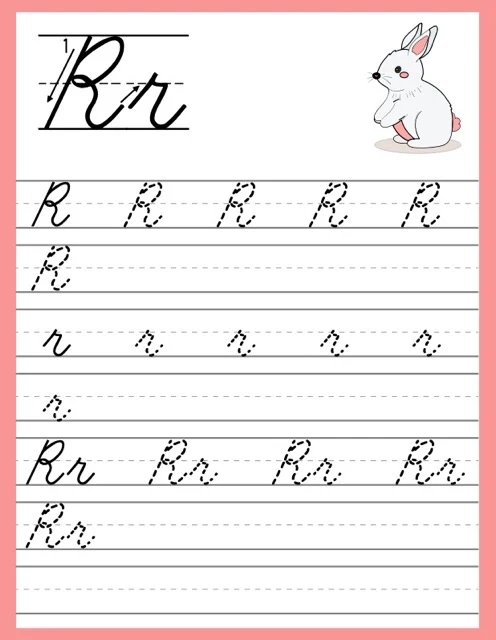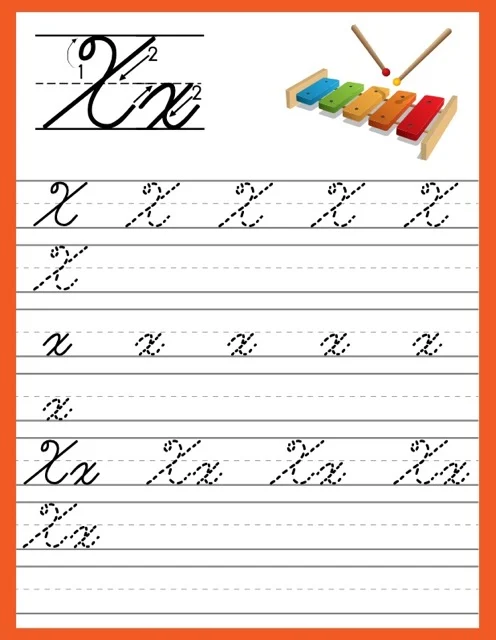Cursive Alphabet Tracing Guides: An Analysis
This briefing document analyzes cursive alphabet tracing guides, examining their purpose, audience (children and adults), structure (alphabetical, uppercase and lowercase letters), and benefits (improved fine motor skills, cognitive function, and handwriting fluency). The analysis emphasizes the importance of consistent practice and the use of engaging visuals, especially for children. Supplementary resources and the enduring relevance of cursive writing in the digital age are also discussed. Further research areas include the history of cursive and its future in education.
The Timeless Art of Cursive: A Guide to Tracing and Mastery
In an age dominated by keyboards and touchscreens, the elegant, flowing script of cursive writing holds a special charm. But it's more than just a beautiful art form; practicing cursive offers a wealth of cognitive and developmental benefits. Whether you're a parent introducing your child to the alphabet, a student looking to improve your handwriting, or an adult seeking a new, relaxing skill, cursive alphabet tracing guides are the perfect gateway. This comprehensive analysis explores the purpose, benefits, and best practices for using these invaluable tools.
Who Are Cursive Tracing Guides For?
Cursive tracing guides are versatile tools designed for a wide audience. They cater to:
Children and Young Students: These guides provide a structured foundation for learning letterforms, enhancing fine motor skills and letter recognition from an early age.
Adults and Lifelong Learners: Many adults who missed out on learning cursive or wish to improve their existing handwriting find these guides to be an accessible and effective method for practice.
The Anatomy of a Tracing Guide
Most tracing guides are systematically organized to facilitate focused learning. Typically, you will find:
Alphabetical Organization: Each letter, in both uppercase and lowercase, is given its own dedicated page or section.
Clear Letterforms: Dotted or lightly printed letters are provided for users to trace over, ensuring they learn the correct formation and connections.
Practice Space: Ample blank lines are usually included for freehand practice after tracing.
The Manifold Benefits of Cursive Writing
The act of putting pen to paper in a cursive script is more than just an exercise in aesthetics. It has been linked to several key benefits:
Enhanced Fine Motor Skills: The connected, flowing movements required for cursive help develop the small muscles in the hands and fingers, leading to greater handwriting fluency and control.
Cognitive Boost: Studies suggest that writing in cursive can improve memory retention and cognitive function. The process of forming letters by hand stimulates the brain in a way that typing does not.
A Personal Touch: In a world of uniform digital text, a handwritten note in cursive stands out. It adds a personal, heartfelt quality to communication that is both distinctive and elegant.
“Consistent practice is crucial for improving cursive writing skills as it reinforces proper letter formation and muscle memory.” - Cursive Writing Study Guide
Best Practices for Effective Learning
To get the most out of a tracing guide, consider the following tips:
Choose Your Tool: You can use a variety of instruments, from pencils and pens to markers. Experiment to see what feels most comfortable for you.
Start Lightly: Begin by tracing the letters with light strokes. As you become more confident in the letterforms, you can gradually apply more pressure.
Practice Consistently: Regularity is key. Aim for short, focused practice sessions of 15-20 minutes several times a week to build and maintain your skills.
Making Cursive Fun for Kids
For younger learners, engagement is critical. Many modern tracing guides are designed specifically with children in mind. As one guide notes, “Cursive alphabet tracing guides for children often incorporate colorful illustrations, engaging themes, and playful fonts to enhance the learning experience.” These elements transform practice from a chore into an enjoyable activity.
Beyond the Workbook: Supplementary Resources
The learning doesn't have to stop when you've filled a workbook. A host of supplementary resources can enrich your practice, including:
Websites and Apps: Interactive websites and mobile applications offer dynamic tracing exercises and games.
Printable Worksheets: Countless free and paid worksheets are available online for endless practice.
The Enduring Relevance of Cursive
While digital communication is ubiquitous, the sources analyzed here confirm that cursive writing is far from obsolete. Tracing guides make it an accessible skill for all ages, offering a unique combination of artistic expression, personal touch, and cognitive benefits. The focus on creating engaging materials for children highlights a continued investment in passing this timeless skill to the next generation.
The Future of Cursive: A Topic for Discussion
The conversation around cursive writing sparks further questions about its place in the 21st century. This invites us to explore:
The historical evolution of cursive script.
The ongoing debate about its inclusion in modern school curricula.
The impact of technology and assistive writing tools on the future of handwriting.
Exploring these areas will deepen our understanding of why this beautiful form of writing continues to matter.

























